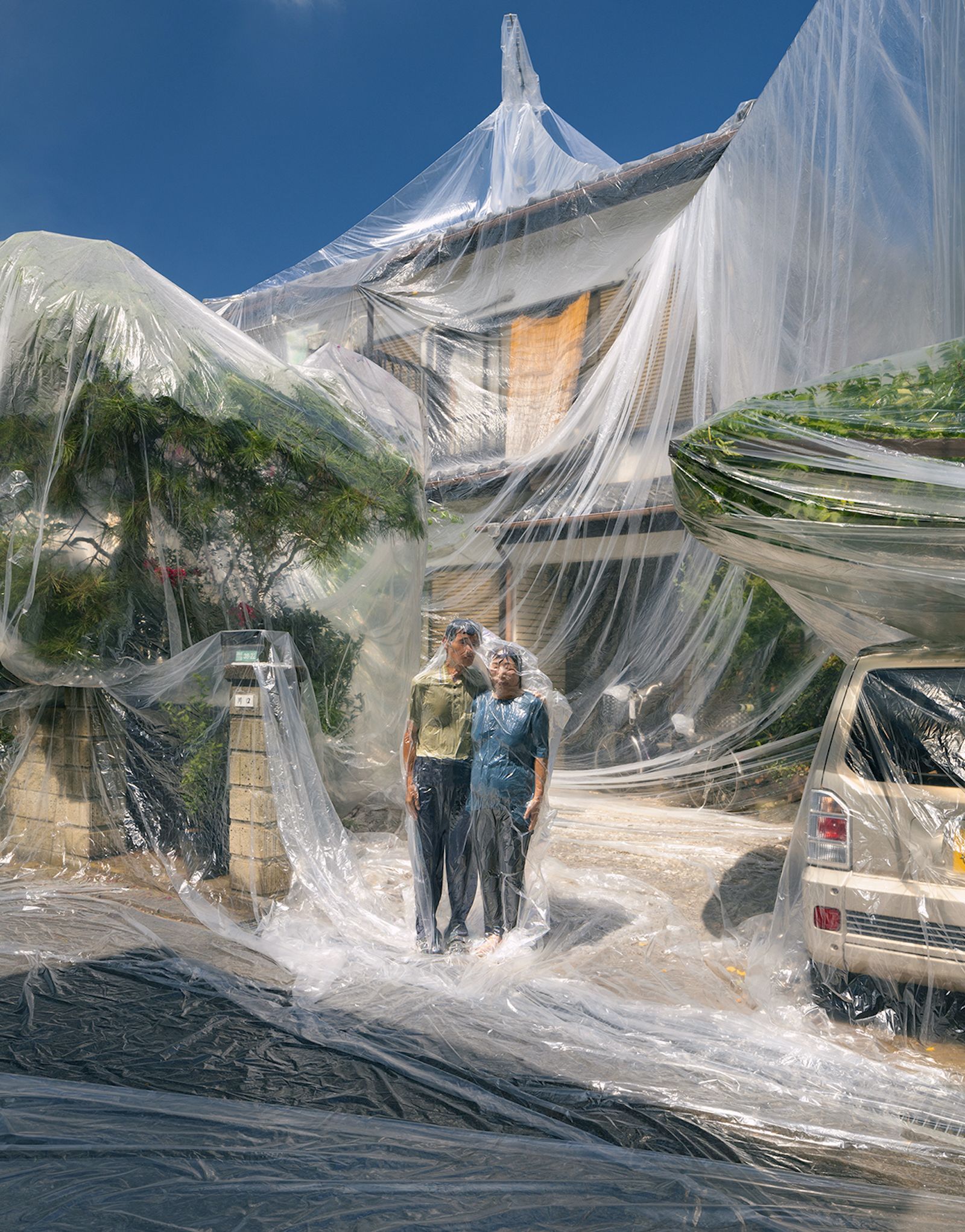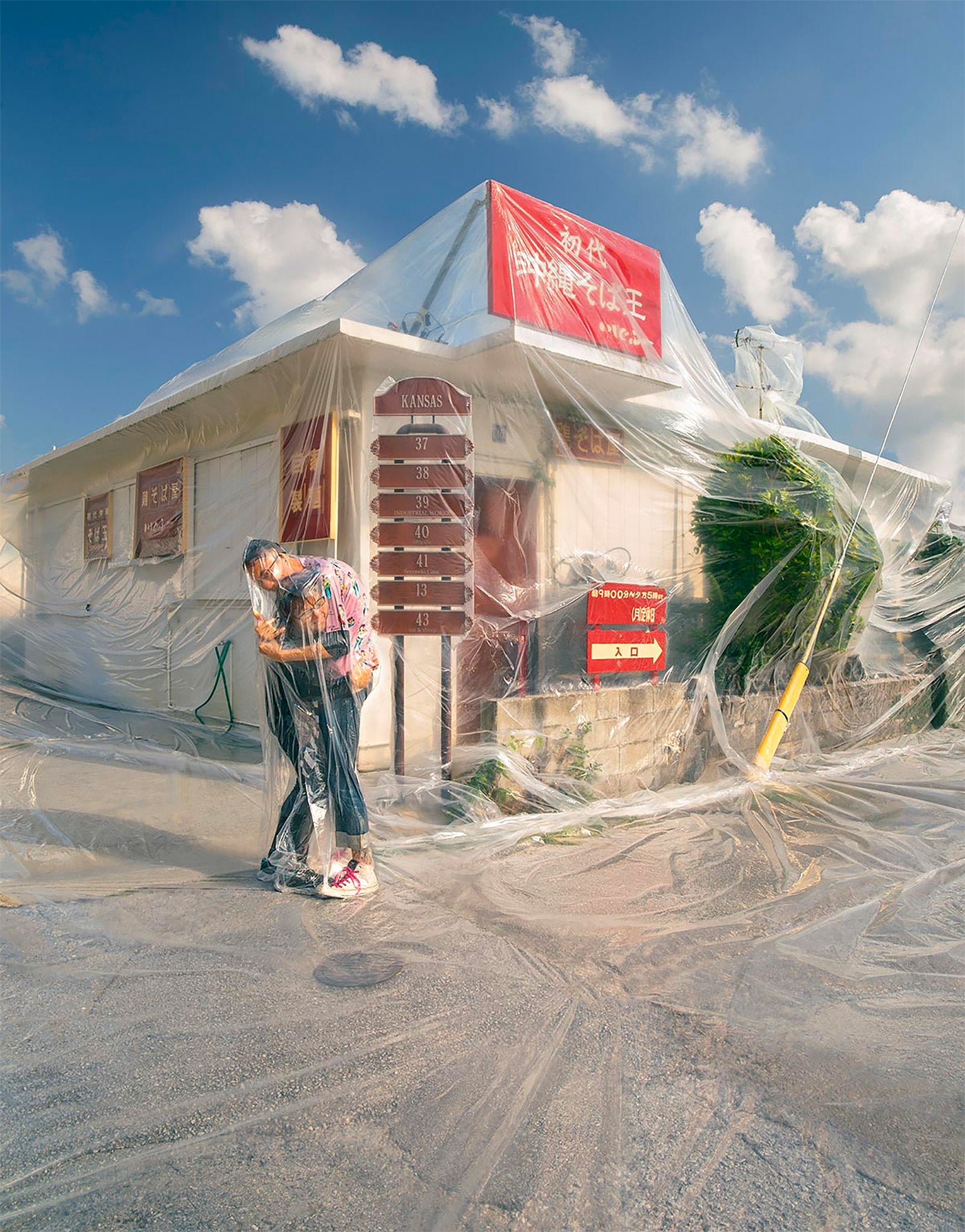
In the effervescent contemporary art scene, photography stands out as a powerful and evocative form of expression, capable of transcending cultural boundaries and challenging conventional aesthetic norms. Amid this panorama, Haruhiko Kawaguchi, also known as Photographer Hal, emerges as a visionary who not only captures images, but redefines the limits of visual experience. This article delves into this artist's distinct works, revealing how his provocative images transcend the ordinary, inviting the viewer to a deep reflection on the complexity of the human condition. From "Pinky & Killer" to "Flesh Love", let's embark on a journey through the lens of Haruhiko Kawaguchi to unveil the visual and conceptual richness of his impactful artistic portfolio.

What is Haruhiko Kawaguchi's artistic journey?
Haruhiko Kawaguchi, also known as Photographer Hal, is a Japanese photographer whose innovative and provocative work explores the themes of love and human intimacy. Born in 1971 and educated in Tokyo, Haruhiko Kawaguchi initially became interested in photography during his travels to the Middle East and India, where the camera became a tool for overcoming language barriers and interacting with people from different cultures.
Haruhiko Kawaguchi's focus on portraying human connection and love manifests itself in his best-known series such as "Pinky & Killer", "Couple Jam", and most recently, "Flesh Love". "Pinky & Killer" captured couples in small spaces, while "Couple Jam" placed them in bathtubs, exploring physical and emotional closeness. However, it is in the "Flesh Love" series that Haruhiko Kawaguchi takes his approach to a new level, vacuum packing couples into personalized plastic bags, exploring the idea of total union and all-encompassing love.
In "Flesh Love," Haruhiko Kawaguchi depicts couples, families and even entire homes encased in plastic, offering a unique insight into human intimacy. Haruhiko Kawaguchi challenges traditional notions of family portraiture by requiring participants to literally engage in the process, being vacuum sealed in plastic bags for a few seconds to create unique and impactful images.
The process, while visually stunning, also raises questions about the nature of love, intimacy and human relationships. Haruhiko Kawaguchi highlights that his intention is to capture human connection in its various forms, from intimacy between couples to people's relationships with the world around them.
Throughout his career, Haruhiko Kawaguchi has expanded his artistic boundaries, presenting not only the theme of love, but also exploring social issues and the chaotic nature of contemporary society. This black and white series reflects his personal point of view on the information society, covering topics that make him question and understand the world on a deeper level.
In addition to exhibitions in Japan, Kawaguchi has had his work exhibited internationally, in countries such as the United States, Taiwan, Canada, Australia, France and the Netherlands. His photographs are included in the collection of contemporary Japanese art by renowned collector Jean Pigozzi. In his search for new dimensions in portrait photography, Haruhiko Kawaguchi continues to challenge conventional boundaries and offer a unique perspective on love, intimacy, and the complexity of human relationships.

What are the characteristics of Haruhiko Kawaguchi's works?
Exploration of Love and Intimacy: The central theme in Haruhiko Kawaguchi's works is love and intimacy. His photographs seek to capture the deep connection between couples, highlighting their physical and emotional closeness.
Conceptual and Innovative: Haruhiko Kawaguchi is known for his innovative and conceptual ideas. His projects, such as "Flesh Love", where he vacuum packs couples into plastic bags, demonstrate a unique and provocative approach to photography, challenging traditional conventions.
Use of Confined Scenarios: Many of Haruhiko Kawaguchi's series involve the use of confined spaces, such as small rooms or bathtubs. These scenarios create an intimate and personal atmosphere, where the closeness between the subjects is emphasized.
Variety of Projects: Haruhiko Kawaguchi is not limited to a single approach or style. His series, such as "Pinky & Killer", "Couple Jam" and "Flesh Love", explore different facets of love and human relationships, showing his versatility as an artist.
Black and White and Color Photography: While some of his series are presented in black and white, others, like "Flesh Love" are in color. This variation highlights your ability to adapt your style to the specific nature of each project.
Inclusion of Cultural Elements: Haruhiko Kawaguchi during his early years traveled extensively throughout the Middle East and India, and these experiences influenced his work. Its approach incorporates cultural elements and a broader understanding of human diversity.
Challenge to Social Conventions: The choice to encase couples in vacuum plastic in "Flesh Love" is a clear example of how Haruhiko Kawaguchi challenges social norms and explores the limits of what is acceptable in contemporary photography.
Active Participation of Models: In many cases, participants in their series play an active role in creating the work. They are challenged to actively participate in the process, whether adjusting their poses or facing unusual situations.

What are Haruhiko Kawaguchi's most famous works?
Pinky & Killer (2009): This was one of Kawaguchi's first notable series, where he captured couples in confined spaces, exploring the dynamics and closeness between the partners.
Haruhiko Kawaguchi, also known as Photographer Hal, emerges as a unique and provocative artist who challenges the boundaries of contemporary photography. His artistic career, from the early days of cultural exploration to the more recent series involving couples in vacuum plastic, highlights his relentless search for new dimensions in visual expression.
Couple Jam (2011): In this series, Haruhiko Kawaguchi took his approach to a new level, placing couples in bathtubs, creating an intimate and challenging atmosphere.
Flesh Love (2012): One of his most impactful series, "Flesh Love" involves vacuum packing couples into personalized plastic bags. This series has gained international recognition for its unique and provocative approach.
? (Question, 2013): A black and white series that reflects Kawaguchi's perspective on the information society and his questioning of complex topics.
Flesh Love Returns (2015): A continuation of the "Flesh Love" series, but this time the couples are photographed in places that are meaningful to them, adding an extra layer of meaning and complexity to the work.
Zatsuran (2017): In this series, Haruhiko Kawaguchi wraps couples with their belongings, such as musical instruments and bicycles, creating images that look like dolls in packaging.
Flesh Love All (2018): An expansion of "Flesh Love", in this series, Haruhiko Kawaguchi not only wraps couples, but also families and places important to them, exploring a wider variety of relationships and connections.

By focusing his works on the theme of love and intimacy, Haruhiko Kawaguchi transcends conventional barriers, presenting images that provoke deep reflections on the nature of human relationships. His "Flesh Love" series, in particular, is notable not only for its visually striking approach, but also for the active participation of the models, who engage in the creative process in a unique way.
Furthermore, Haruhiko Kawaguchi's works reflect his ability to adapt to different styles and themes, from the representation of the information society in black and white to the exploration of family relationships and meaningful places in "Flesh Love All".
His international presence in renowned exhibitions and collections highlights the worldwide recognition of his innovative work. Haruhiko Kawaguchi's ability to challenge aesthetic norms and provoke emotional reactions makes his works not only visually intriguing, but also catalysts for dialogue about the complexity of the human condition.
Haruhiko Kawaguchi makes his mark as a visionary in contemporary photography, constantly redefining the limits of what is possible in visual art. His works continue to inspire and question, inviting audiences to explore the many facets of love, intimacy and human connection through his unique and provocative gaze.
